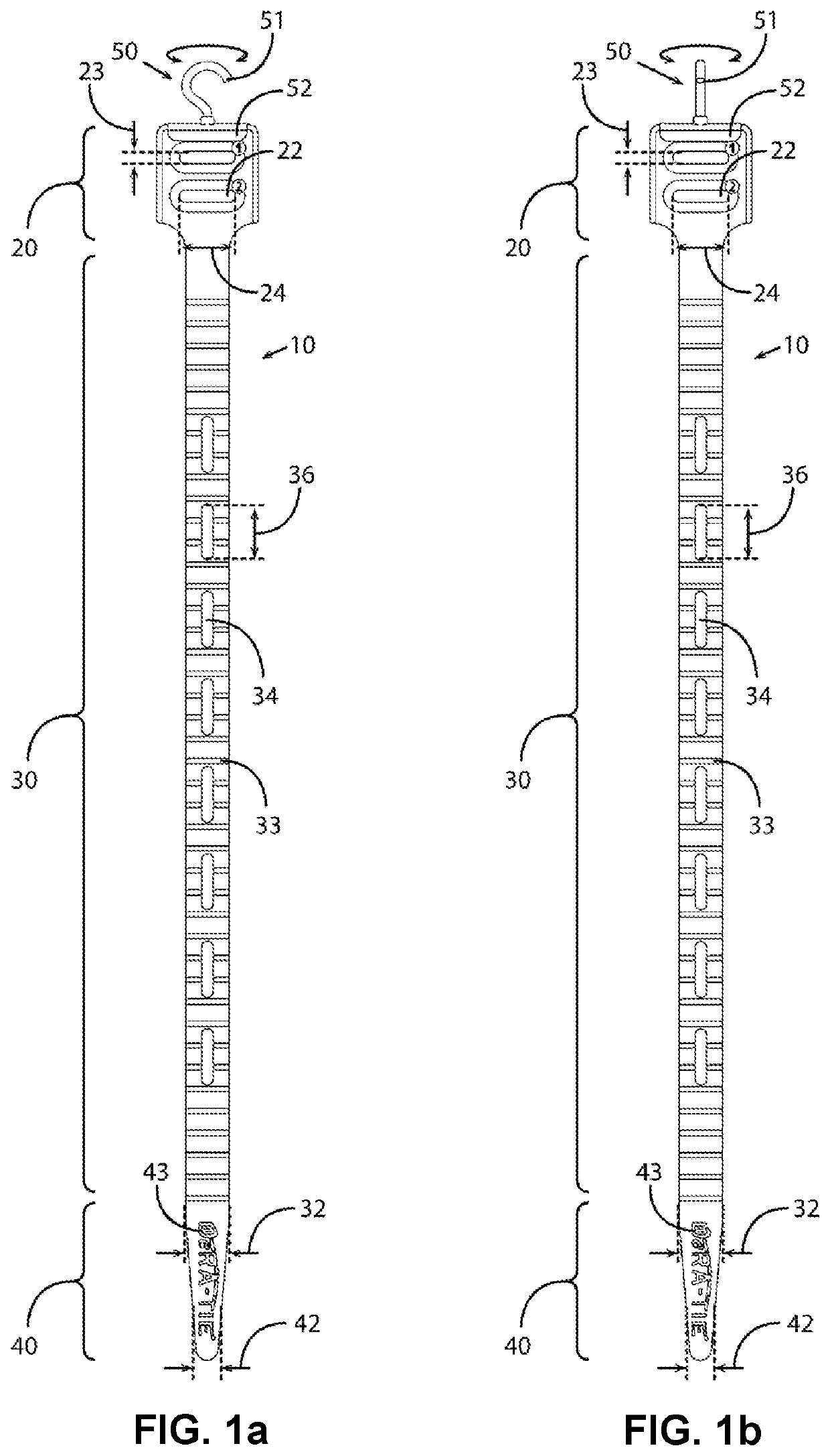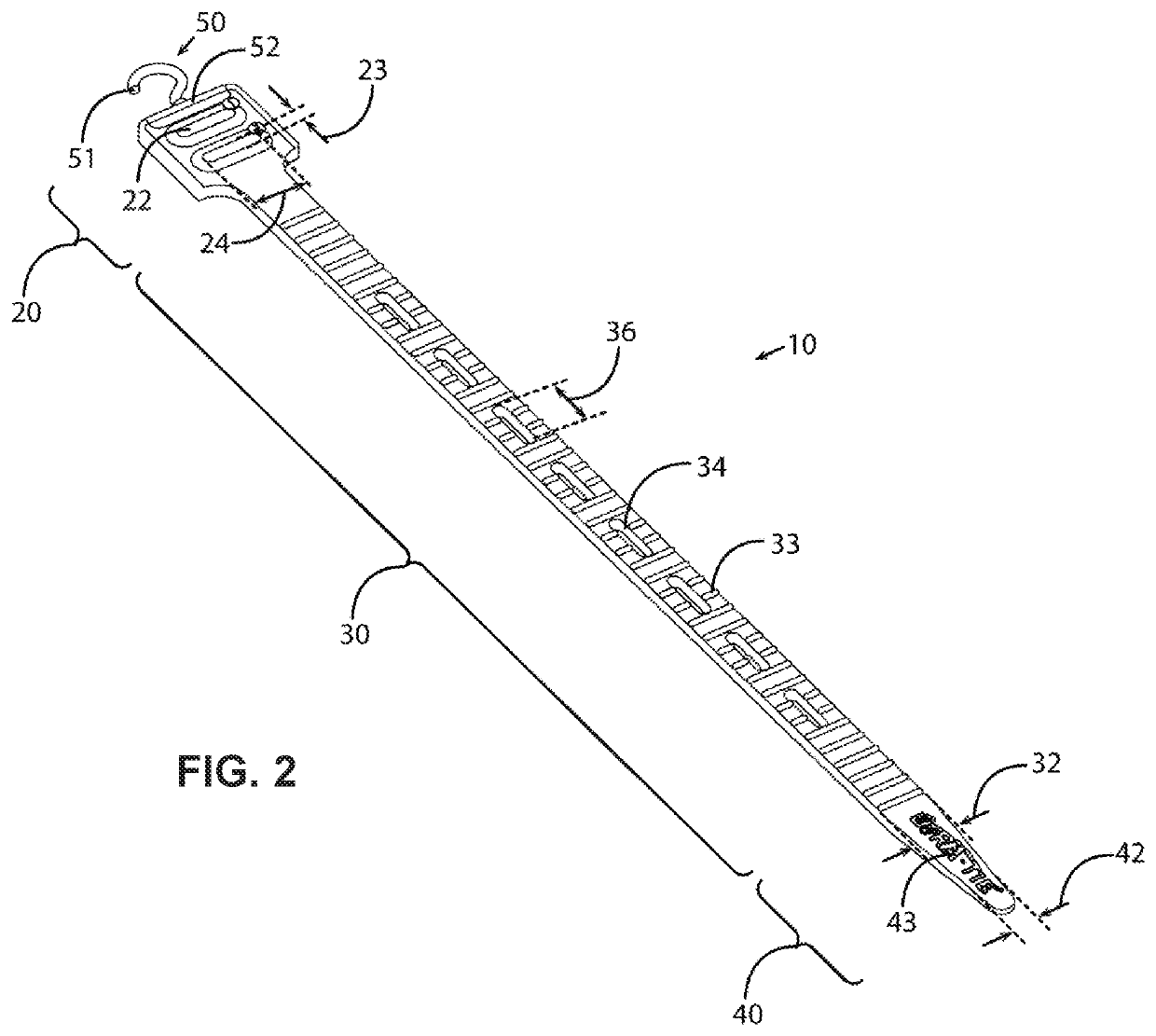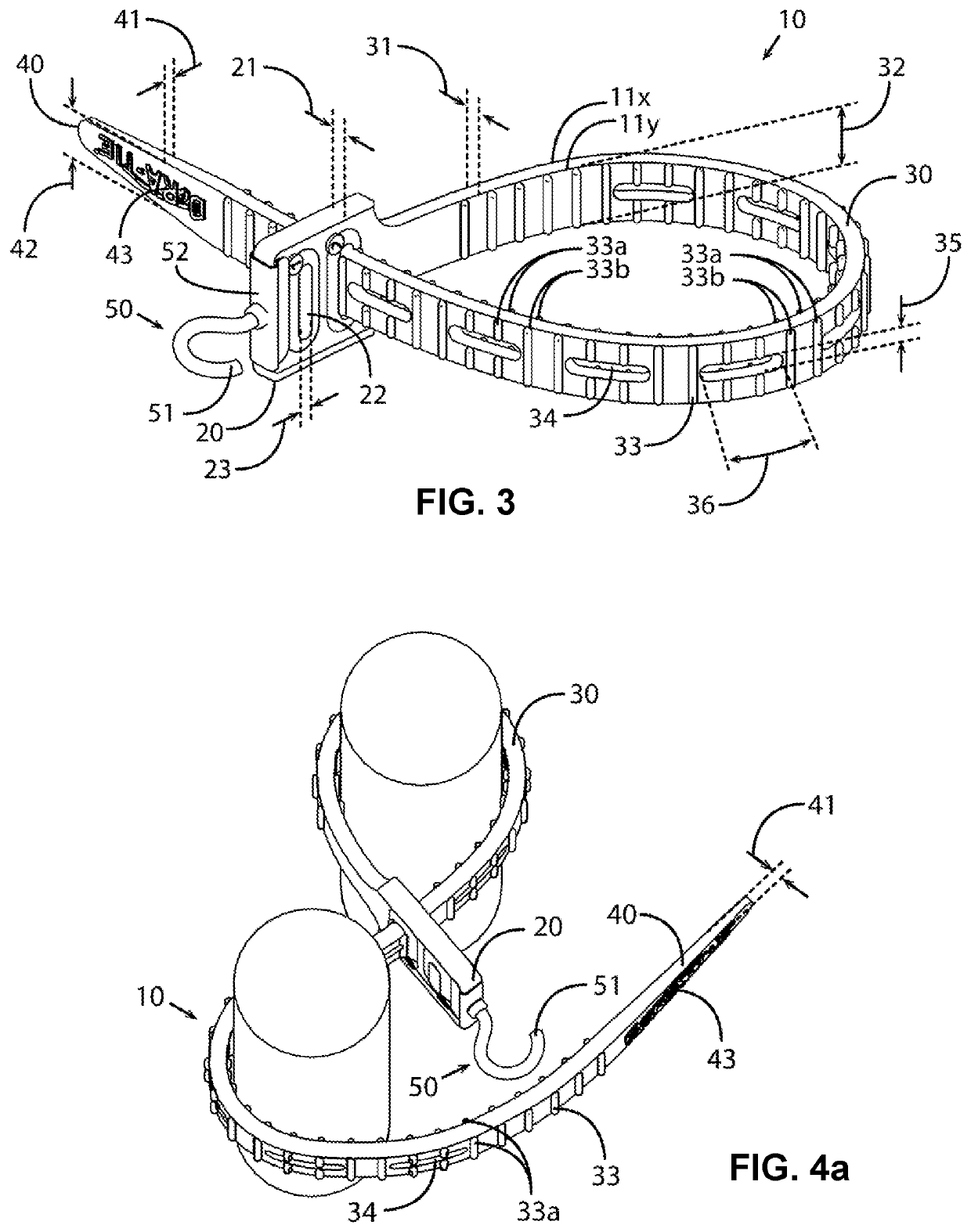Reusable tie strap with multiple apertures
a tie strap and aperture technology, applied in sustainable packaging, transportation and packaging, eco-design packaging, etc., can solve the problems of loss of fastening strength, unreliable coupling between the button and the keyhole, and large separation between adjacent keyholes, etc., to achieve rapid attachment and detach, and extra holding strength and reliability
- Summary
- Abstract
- Description
- Claims
- Application Information
AI Technical Summary
Benefits of technology
Problems solved by technology
Method used
Image
Examples
first embodiment
[0053]FIGS. 1-4 show the tie strap 10 comprising a head 20 formed on a first end, a body 30 formed on a medial region, and a tail 40 formed on a second end. In alternate embodiments not illustrated the tie strap 10 may include multiple heads 20, bodies 30, and tails 40.
[0054]The head 20 comprises a plurality of similarly dimensioned head apertures 22 extending through the entire head thickness 21. Each head aperture 22 has a head aperture height 23 along its minor dimension and a head aperture width 24 along its major dimension. The head thickness 21 is defined adjacent to the head apertures 22.
[0055]Although not illustrated, additional apertures of arbitrary size and shape may be present, such as a small circular aperture for hanging the tie strap 10 on a nail or pegboard hook. Furthermore, although head apertures 22 are illustrated as narrow slots with rounded ends, any aperture shape suitable for coupling with a body 30 may be used. Finally, although a uniform head thickness 21 i...
second embodiment
[0065]FIG. 9 shows an example application of the second embodiment in which the tie strap 10 is semi-permanently secured to a first object by coupling the body 30 to a first head aperture 22. In FIG. 9a, the body 30 is wrapped around a second object but not yet secured thereto. In FIG. 9b, the tie strap 10 is secured to the second object by coupling the catch mechanism 50 to a body aperture 34. The catch lip 51 is adapted to readily pass through the body aperture 34 in the direction of insertion and to resist passing through the body aperture 34 in the direction of withdrawal.
third embodiment
[0066]FIG. 10 shows the tie strap 10 wherein the catch mechanism 50 comprises a cylindrical post protruding transversely from the distal end of the head 20. The catch mechanism 50 has a bulbous catch lip 51 for coupling to a body aperture 34. FIG. 11a shows the tie strap 10 prior to coupling of the catch mechanism 50 to a body aperture 34; FIG. 11b shows the tie strap 10 with the catch mechanism 50 coupled to a body aperture 34.
[0067]FIG. 12 shows a fourth embodiment of the tie strap 10 wherein the catch mechanism 50 comprises a grapple hook protruding axially from the distal end of the head 20. As in the first embodiment, the catch mechanism 50 may swivel. Further, the catch mechanism 50 may be bifurcated, trifurcated, and so on.
[0068]Finally, FIG. 13 shows a fifth embodiment of the tie strap 10 wherein the body apertures 34 have shape and dimensions complementary with the catch mechanism 50 but not complementary with the body 30. A tie strap 10 configuration as shown in FIG. 6 is ...
PUM
 Login to View More
Login to View More Abstract
Description
Claims
Application Information
 Login to View More
Login to View More - R&D
- Intellectual Property
- Life Sciences
- Materials
- Tech Scout
- Unparalleled Data Quality
- Higher Quality Content
- 60% Fewer Hallucinations
Browse by: Latest US Patents, China's latest patents, Technical Efficacy Thesaurus, Application Domain, Technology Topic, Popular Technical Reports.
© 2025 PatSnap. All rights reserved.Legal|Privacy policy|Modern Slavery Act Transparency Statement|Sitemap|About US| Contact US: help@patsnap.com



